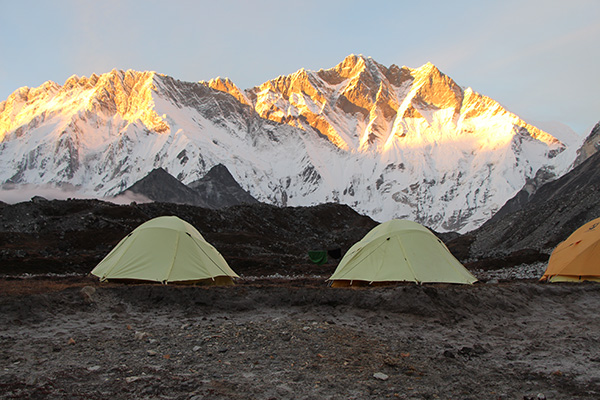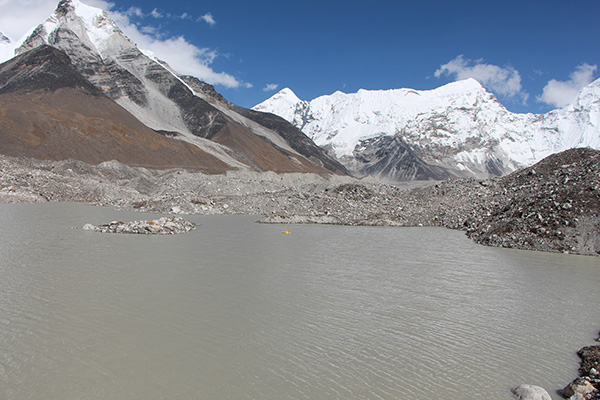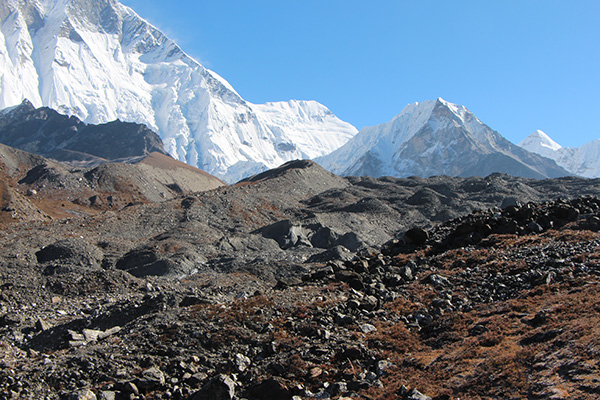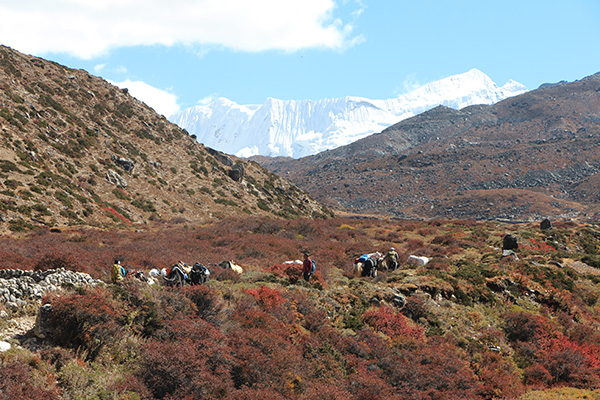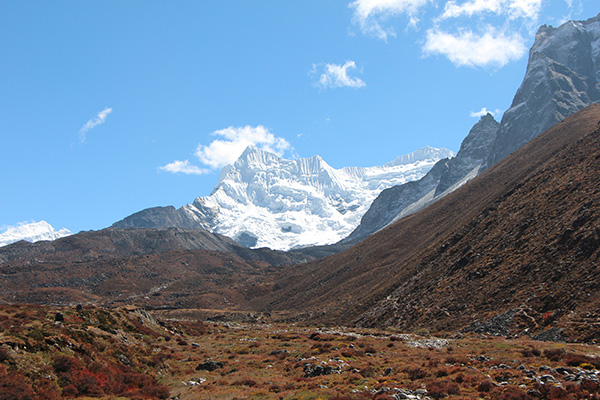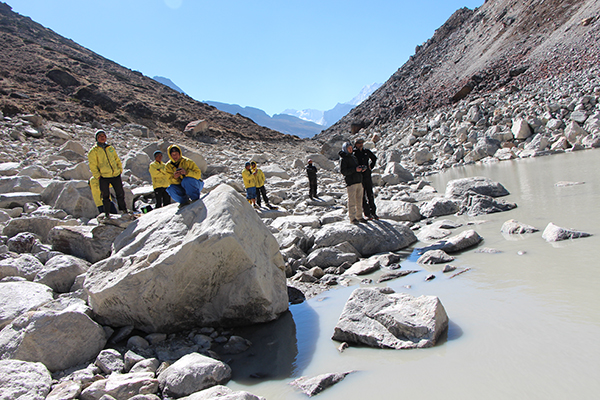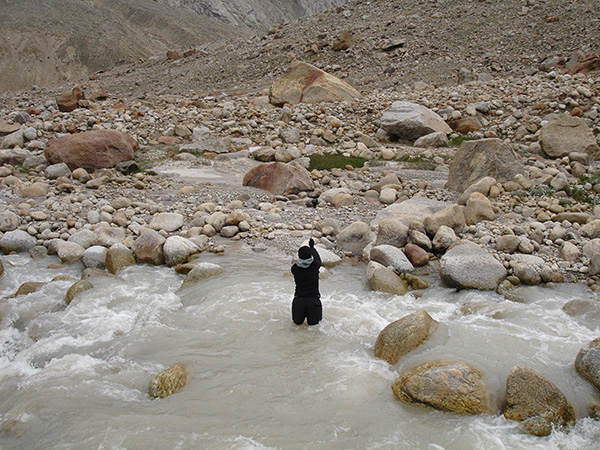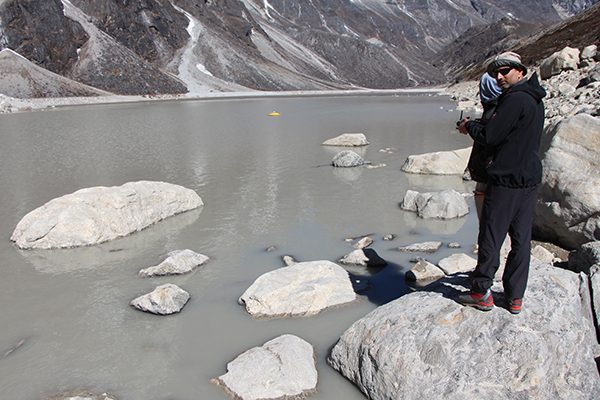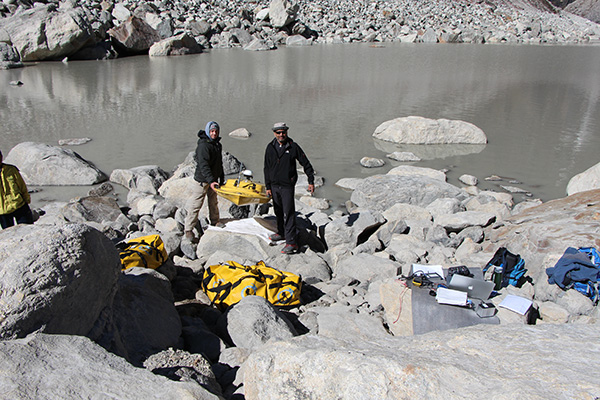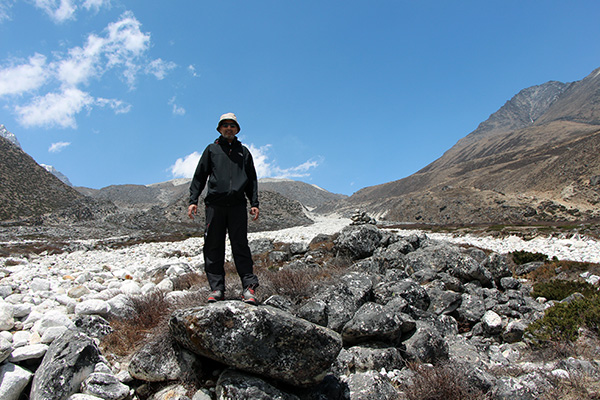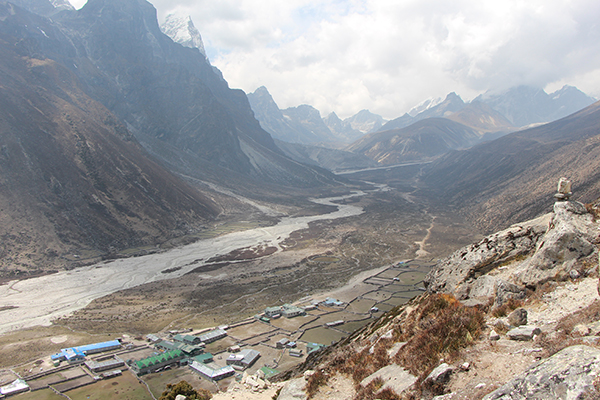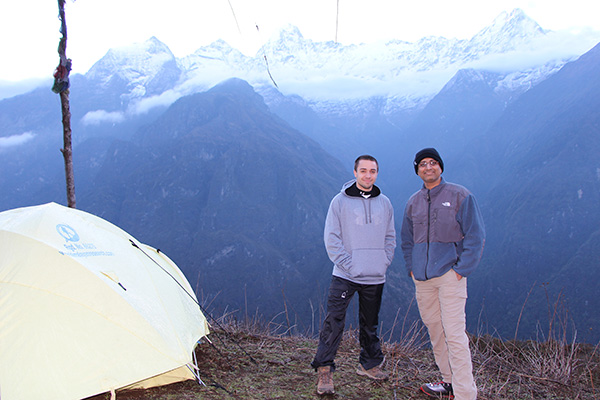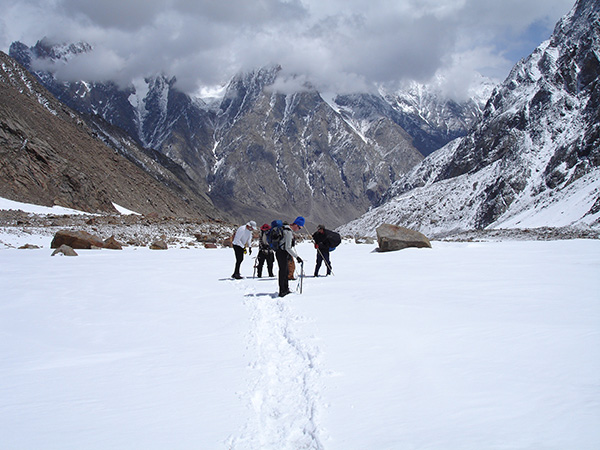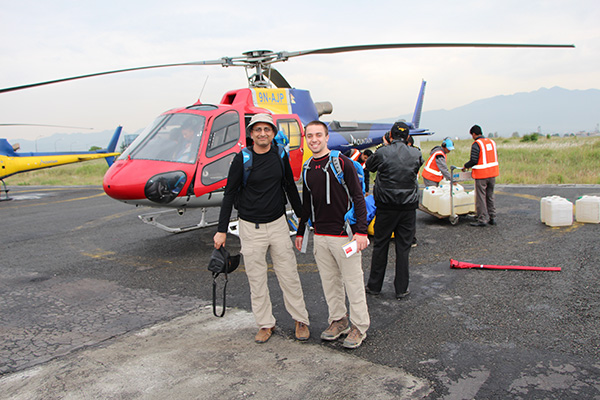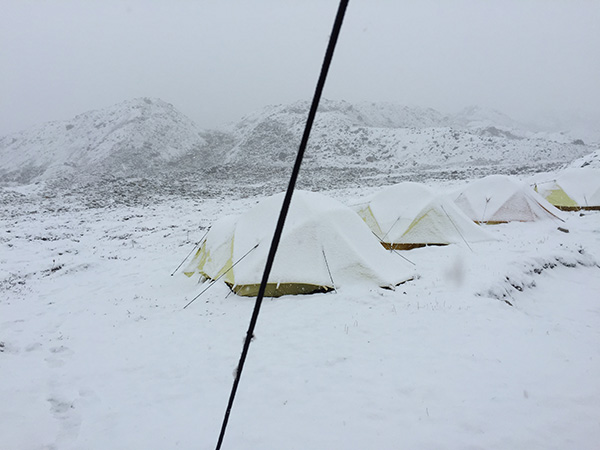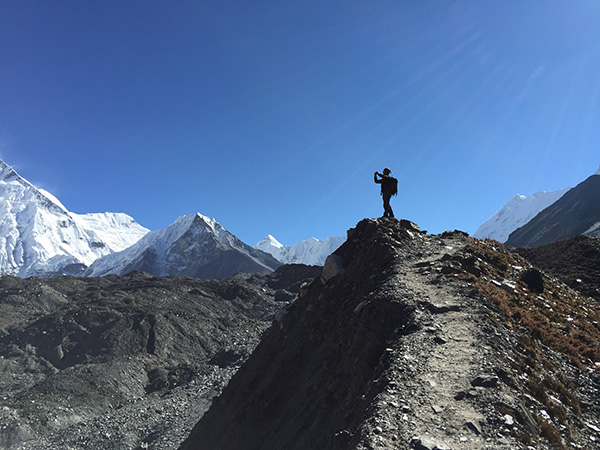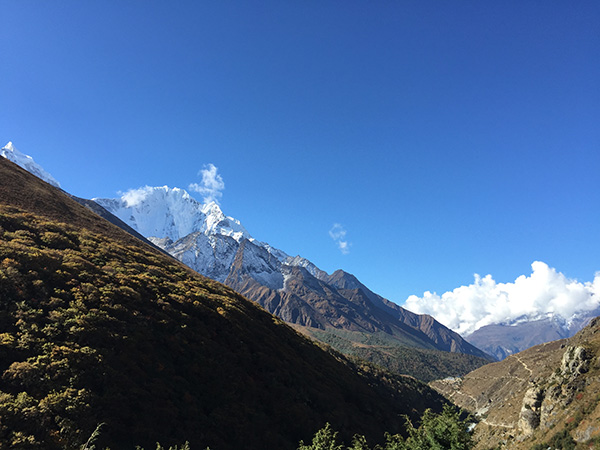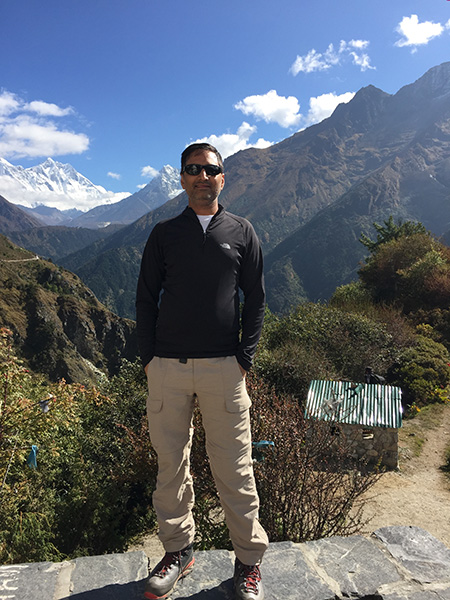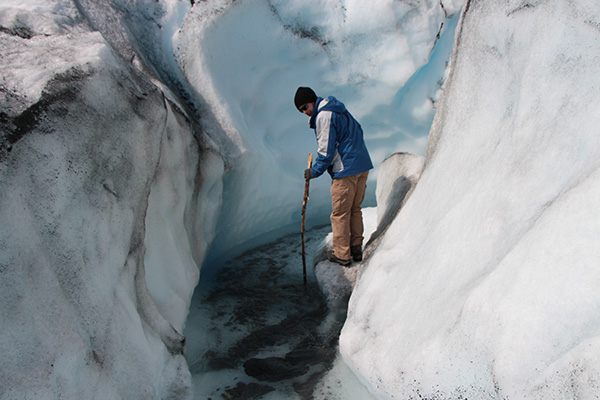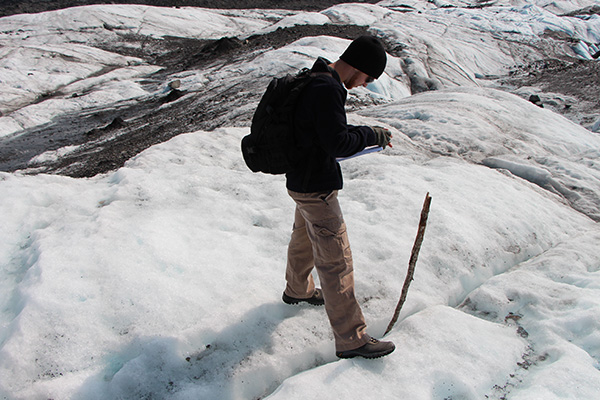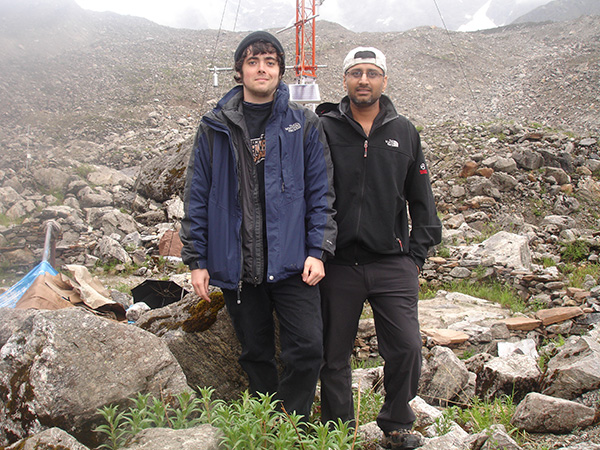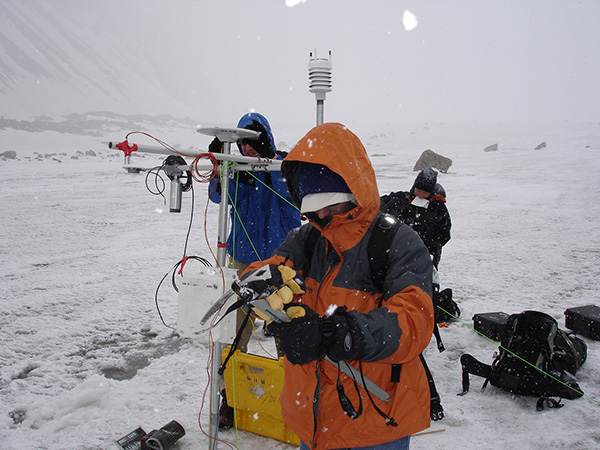College of Arts and Sciences Newsroom
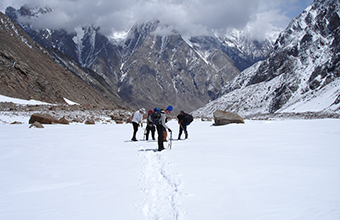
NASA Funds Climate-Change Research
A University of Dayton researcher received a $630,000 grant from NASA to study how the heating of glacier lakes is accelerating the melting and retreat of glaciers in Asia's Himalaya mountain range.
Umesh Haritashya, associate professor of geology, and a team of three geologists from other universities will develop and apply a set of tools to investigate the role of glacier lakes in speeding the thinning and retreat of glaciers in the Himalaya region of Nepal, Bhutan and China. The project starts Feb. 1 and is funded through 2020.
This will be the second time in five years NASA has awarded research funding to Haritashya. In 2012, his team received nearly $1 million to conduct analysis of glacier lakes of the Hindu Kush-Himalaya Region. Haritashya said this new funding is not related to his previous NASA projects.
“For the first time ever, NASA issued a research call specifically to understand changes in high mountain Asia,” Haritashya said. “Our research group, along with 60 others, submitted proposals, and we were one of 12 accepted. We were awarded the money because our proposal was considered ground-breaking research for what NASA wants to study and include in its broad glacial melt toolbox that NASA is developing.”
NASA’s interest in high-mountainous Asia is a result of the increased rate at which glaciers in the area are melting, causing life-threatening glacial lake outburst floods among many other issues.
“With global temperatures on the rise, the glaciers of the world are melting and retreating at rates faster than ever,” Haritashya said. “As glaciers melt, glacial lakes continue to expand, becoming an ever-growing cause for concern. These lakes are generally held back by glacial moraines of loose, unstable sediment that can become weak and can fail for many reasons. If the moraines were to ever be breached by the lake water, a phenomenon known as a glacial lake outburst flood will occur and could send immense amounts of water rushing down the valley, threatening to wipe out entire towns.”
One of the overarching goals of Haritashya’s research is to gain more insight into what causes glacial lake outburst floods, so mitigation efforts and possible prevention methods can be incorporated to potentially save a number of lives.
“Dr. Haritashya is a leading scholar in the fields of glacial hydrogeology and remote sensing,” said Daniel Goldman, professor and department of geology chair. “His research is not just cutting-edge science, it is directly beneficial to thousands, perhaps millions, of people who are being affected by climate change. His work on Himalayan water resources and glacial lake outburst flooding is critical to the safety and future prosperity of people in India, Pakistan and Nepal.”
In this new project, Haritashya’s team will develop and create research tools and strategies that include the use of satellite images and computer modeling to examine how glacier lakes are speeding the melting process of glaciers. The tools will be created, packaged and released to NASA to create a broad glacial melt toolbox to understand climate change impact on high mountain Asia glaciers.
Haritashya’s team will view different satellite wavelengths to determine the penetration of light into various lakes in the region and how it impacts the water temperature and the rate of glacier melting. They will also study factors that affect light penetration in the lake such as sediment concentration, the time of day and season, shadows across the lake and the available radiation. In addition to viewing satellite images, the team will spend a number of weeks in the field.
"We will investigate over the satellite era, the mass movement environment of glacial lakes, those lakes’ effects on glacier dynamics and timescales from glacier lake inception through growth, to glacier lake outburst floods; and compare glacier lake outburst floods with other mountain flood types: triggers, timescales, peak discharges and downstream reach,” Haritashya said.
While this is an exciting opportunity for Haritashya’s research career, his work also benefits University students in his classroom.
“These opportunities absolutely, 100 percent affect my teaching,” Haritashya said. “I’m not just bringing textbook knowledge to the classroom, I am bringing in real-life experience and scientific data that support the textbook’s teachings. I take students out in the field with me to do research and in the classroom; I am bringing with me all the time examples from my field work to support the concepts I am teaching.”
Haritashya’s accomplishments are an asset that both he and the University should be proud of.
“Sponsored research funding is extremely competitive and Dr. Haritashya's success is a testament to the quality of his ideas and work,” Goldman said. “These are especially noteworthy accomplishments for a faculty member in an undergraduate department who works without the help of doctoral students. His research, as well as the research of our other faculty members, is helping the department of geology become a leader in understanding the effects of global climate change on society.”
- Alex Burchfield ’16, communication assistant, College of Arts and Sciences

